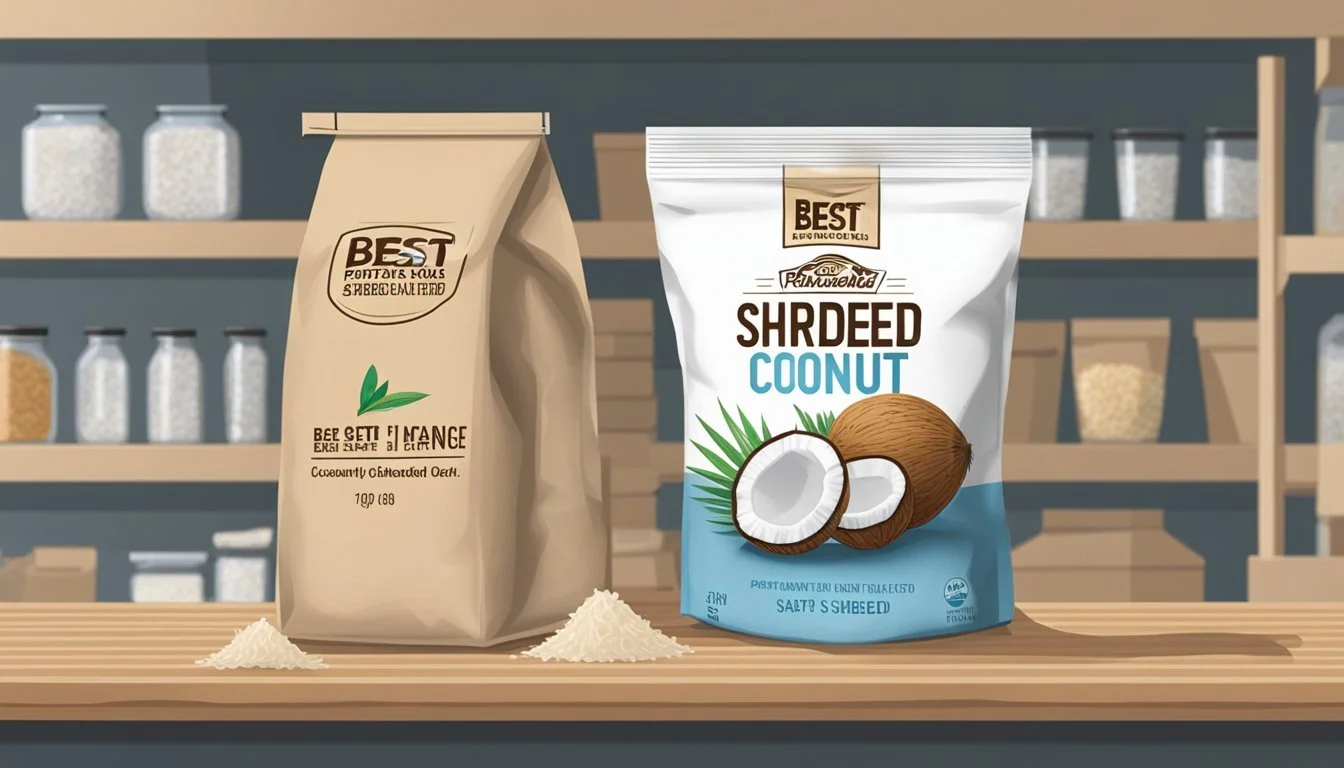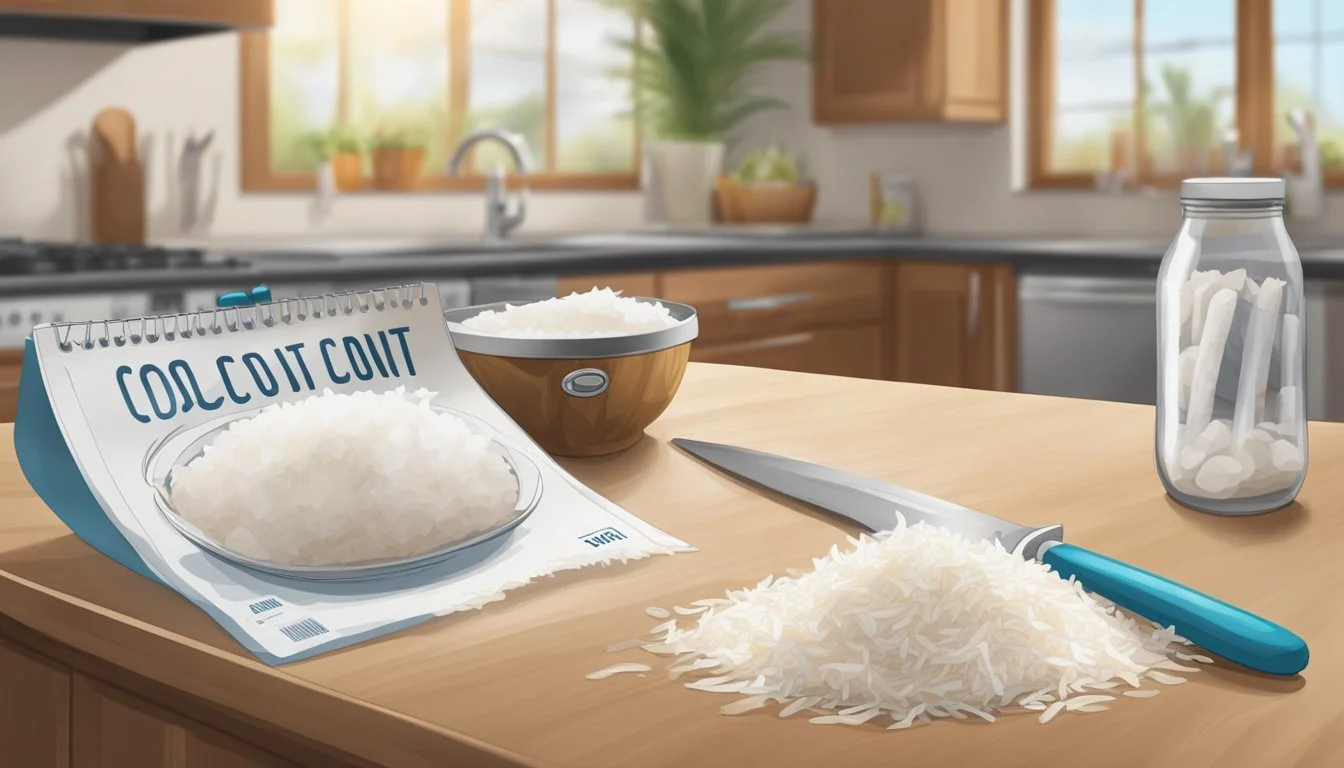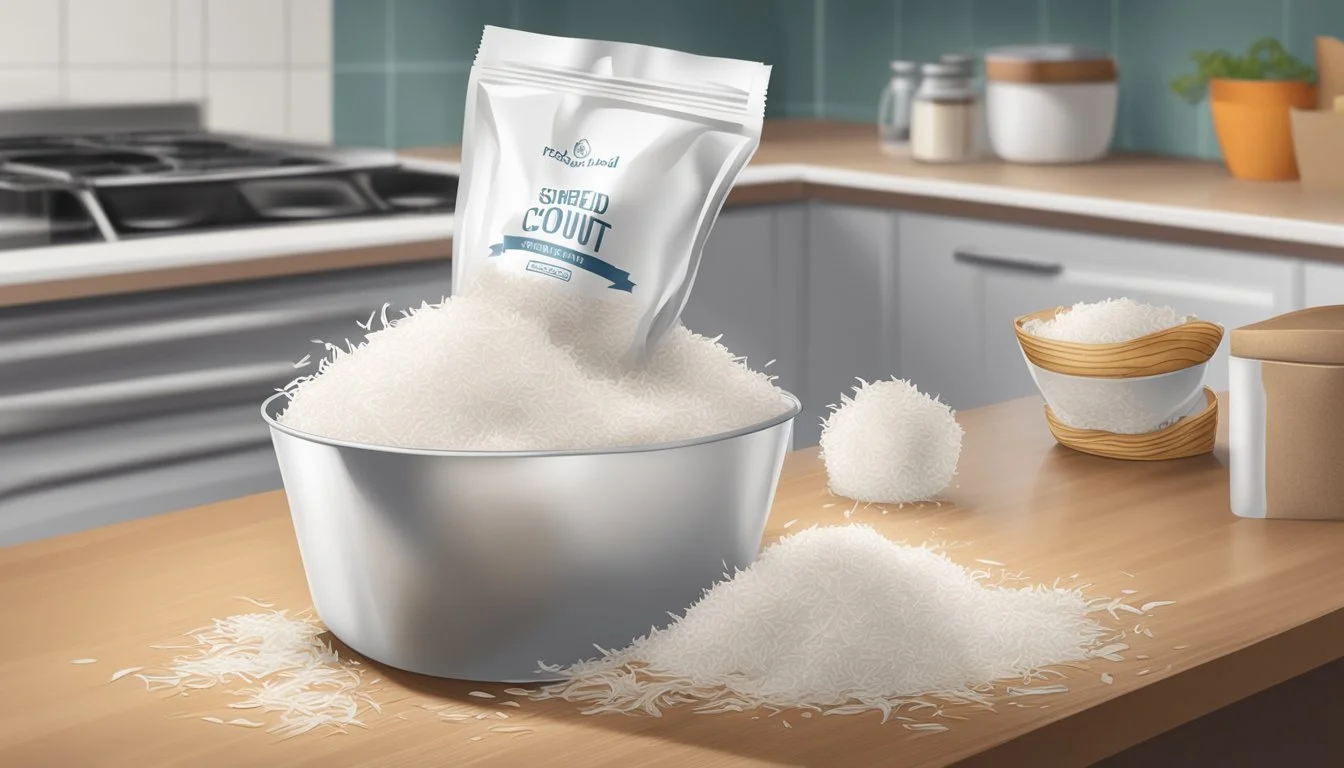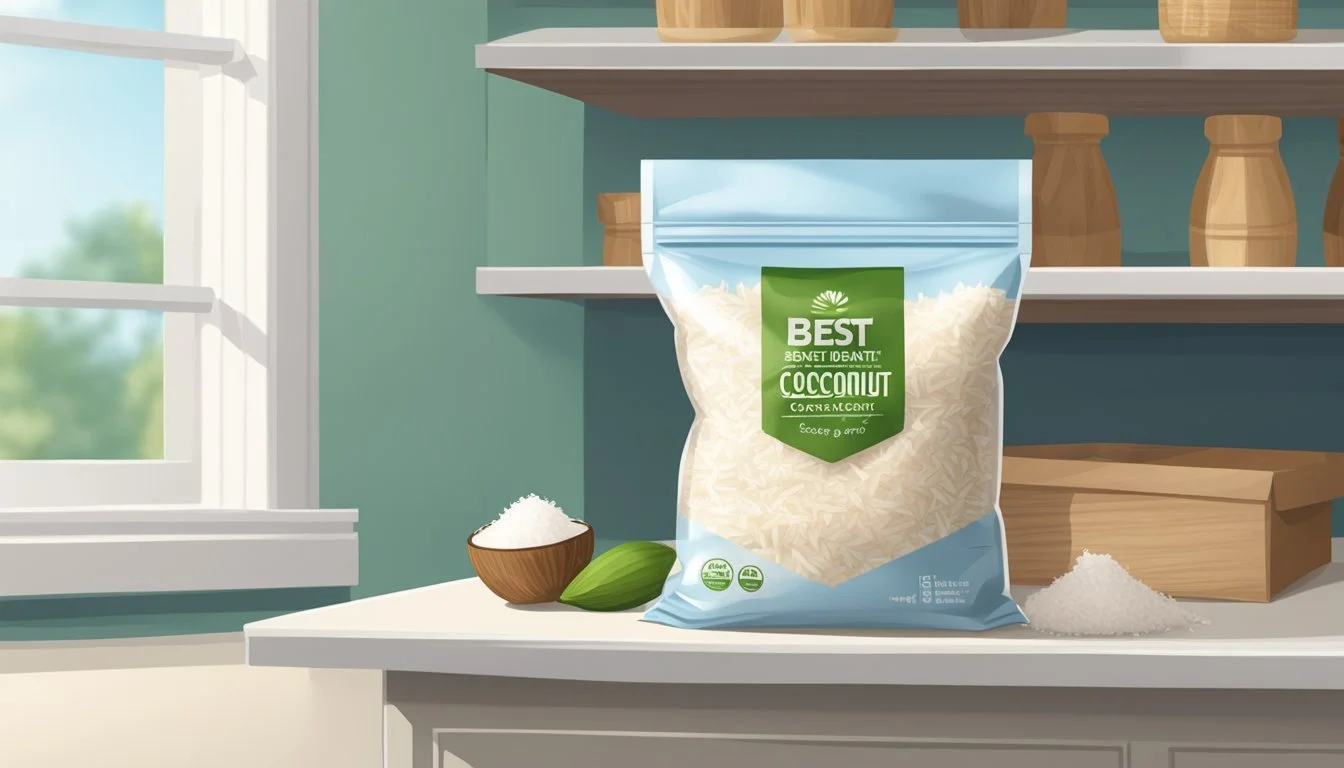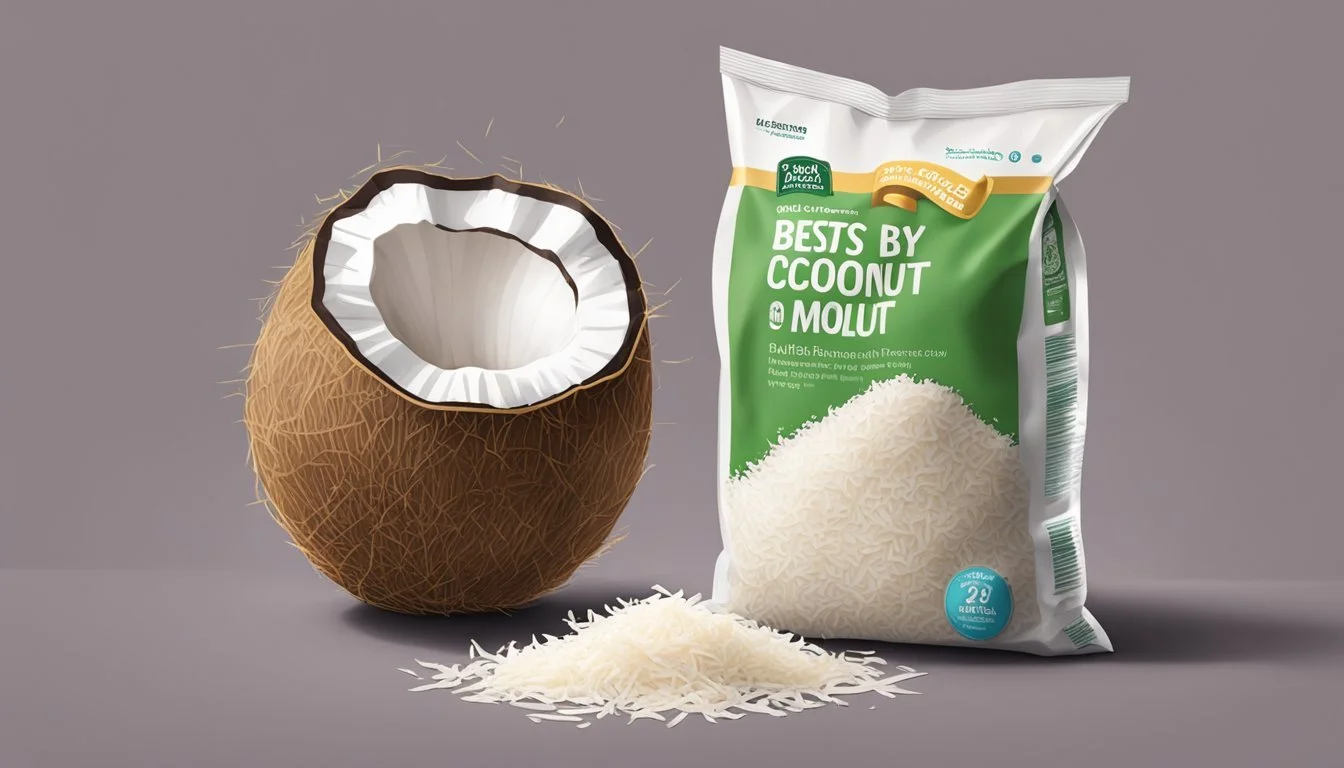How Long Does Shredded Coconut Last?
Shelf Life and Storage Tips
Shredded coconut (how long does shredded coconut last?) is a staple in many kitchens, beloved for its ability to add a tropical flair to a variety of dishes, from baked goods to savory meals. Its convenience and versatility make it a go-to ingredient, but understanding its shelf life is crucial to ensure both food safety and quality. Typically, when stored correctly in an airtight container, shredded coconut can last from a few weeks up to six months, depending on the storage method.
Unopened shredded coconut can maintain its quality for several months when kept in a cool, dark place, such as a pantry. Once opened, if stored at room temperature, it remains fresh for about 2 to 3 weeks. To extend its shelf life, refrigeration is recommended; in the fridge, shredded coconut can stay good for 3 to 4 months. For long-term storage, freezing shredded coconut can make it last for up to a year. It's important to be aware of signs of spoilage, such as a rancid smell or changes in texture and color, which indicate that the coconut should no longer be consumed.
Understanding Shredded Coconut
Shredded coconut, a byproduct of the coconut palm, is a versatile ingredient commonly used in various cuisines for its distinctive texture and flavor. It is often incorporated into baked goods, granolas, and other recipes. Shredded coconut comes in two main forms: fresh and dried. Fresh shredded coconut contains more moisture and tends to have a softer texture, whereas dried shredded coconut is dehydrated and has a longer shelf life.
Shelf Life of Shredded Coconut:
Fresh: Shorter shelf life, best consumed within a few days.
Dried: Lasts up to 6 months to a year when stored properly.
When it comes to storage, both freshness and shelf life are greatly influenced by environmental conditions. Proper storage entails sealing the coconut in an airtight container and placing it in a cool, dry location. Refrigeration is recommended to further extend freshness.
Users can assess the quality of shredded coconut through its sensory attributes:
Texture: Should be firm, not soggy or overly hard.
Smell: A fresh nutty aroma is ideal; any sour or off odors indicate spoilage.
Taste: Should retain the natural sweetness and nutty flavor of coconut.
Aside from its culinary uses, shredded coconut is appreciated for its dietary fiber and nutrients, contributing to a balanced diet. However, the nutritional content can vary depending on how the coconut has been processed and if any preservatives have been added.
It is important to note that the shelf life can also be affected by how quickly the coconut was processed after being picked, as well as the time it took to arrive at its final destination. Consumers should always check for signs of spoilage before use to ensure quality and safety.
Shelf Life Fundamentals
Proper storage techniques are crucial for maintaining the shelf life of shredded coconut, which can vary significantly based on conditions such as air, moisture, light, and temperature.
Pantry Storage
Shelf life in the pantry hinges on keeping shredded coconut in an airtight container and placing it in a cool, dark place. Typically, it remains good for a few months past the expiration date if unopened. It's essential that the temperature remains consistent to prevent spoilage.
Refrigerator Storage
When stored in the refrigerator, shredded coconut's shelf life extends due to the reduced exposure to air and moisture. It's advisable to use opaque, airtight containers to shield the coconut from light and air, enabling it to last approximately 6-8 months.
Freezer Storage
For long-term preservation, freezing shredded coconut is the most effective method. It should be packed in airtight containers or heavy-duty freezer bags to protect against freezer burn. In the freezer, it can maintain quality for up to one year.
Signs of Spoilage
When assessing the quality of shredded coconut, it is important that consumers recognize the signs of spoilage to prevent foodborne illness. The signs can be observed through visual inspections, detecting odors, and noticing changes in texture.
Visual Indicators
Visual inspection can reveal clear signs of spoilage such as discoloration or the presence of mold. Fresh shredded coconut should have a white color, and any deviations such as yellowing or green spots could indicate mold growth. The appearance of mold, which may present as fuzzy spots of various colors, is a definite sign that the coconut should not be consumed.
Olfactory Indicators
Shredded coconut that emits an off smell or rancid smell is indicative of spoilage. Good quality shredded coconut should have a sweet, mildly nutty aroma. Any sour or unpleasant odors are a clear signal that the coconut has gone bad and should be discarded.
Texture Changes
Finally, a change in texture can signal that the shredded coconut is no longer suitable for consumption. Fresh shredded coconut should feel dry to the touch and slightly crisp. If one finds it to be slimy or excessively moist, this could be a sign of spoilage due to unwanted moisture, which promotes bacterial growth. It is crucial that such changes in texture are taken seriously to avoid the risks associated with spoiled food.
Proper Storage Techniques
When storing shredded coconut, maintaining the quality is paramount to its longevity and taste. Here are the key techniques:
In the Refrigerator: Shredded coconut should be placed in an airtight container or a resealable plastic bag to protect it from air and moisture, which can lead to spoilage. Stored this way, it can generally last between 6 to 8 months.
Freezing: For long-term storage, freezing is advisable. The coconut should be placed in an airtight container or a ziplock bag, ensuring all air is squeezed out before sealing. It can remain stable for up to a year in the freezer.
Thawing: To use frozen shredded coconut, one should thaw it in the refrigerator to prevent moisture accumulation, which can affect its texture and flavor.
Dry Storage:
Pantry: Keep it in a cool, dark place, preferably in a sealed container.
Fridge: Ideal for an opened package, useful to extend freshness.
Freezer: Best for extending shelf life up to a year; remember to seal appropriately.
Here's a quick reference:
Location Container Shelf Life Refrigerator Airtight container 6-8 months Freezer Airtight/Ziplock bag Up to 1 year Pantry Airtight container A few weeks
In summary, shredded coconut's enemies are air and moisture. Whether it's included in a batch of granola or stored on its own, one must ensure it's well-protected. These storage methods help maintain freshness and flavor, reducing the likelihood of waste.
Usage and Preservation
Proper preservation techniques extend the shelf life of shredded coconut, and understanding the correct methods for freezing and thawing ensures that the coconut retains its quality and flavor.
Freezing Shredded Coconut
To freeze shredded coconut, one should first spread it in a thin layer on a baking sheet and place it in the freezer until individually frozen. Then, transfer the frozen coconut to an airtight container or freezer bag. Sweetened shredded coconut and unsweetened shredded coconut can be frozen with this method. Frozen shredded coconut will keep for up to eight months.
Thawing Frozen Coconut
When ready to use, the frozen shredded coconut should be thawed by transferring it to the refrigerator for several hours or leaving it at room temperature. It's important not to thaw it in the microwave, as this can cause the coconut to become too soft or moist.
Extending Shelf Life
To extend the shelf life of shredded coconut, store it in a cool, dry place within an airtight co ntainer to prevent moisture and contaminants. Adding a few drops of coconut oil can help maintain the moisture of homemade shredded coconut. For desiccated coconut, which has a drier texture, ensure a completely dry container is used for storage.
Alternative Coconut Products
When shredded coconut is unavailable, other coconut products like coconut flakes or coconut chips (how long do coconut chips last?) can be used as substitutes in some recipes, although the texture and sweetening level might differ. Storage principles for these products are similar to those for shredded coconut.
- **Shredded Coconut Type** | **Preservation Method** | **Expected Shelf Life**
- -------------------------------|-------------------------|-------------------------
- Sweetened | Airtight container | 6-8 months
- Unsweetened | Airtight container | 6-8 months
- Homemade | Airtight with oil | 4-6 months
- Desiccated | Dry container | 6-8 monthsRecipes and Applications
Shredded coconut is a versatile ingredient that can enhance numerous recipes, ranging from baked goods to savory dishes and refreshing beverages. Each application benefits from the unique texture and tropical flavor that shredded coconut provides.
Baking
In baking, shredded coconut is commonly used to add a chewy texture and rich flavor to desserts. A classic recipe where it shines is coconut macaroons, which are simple to make and rely on the coconut's moisture for a tender bite. Another favorite is coconut cake, where it imparts a delicate sweetness. Shredded coconut is also a staple in granola recipes, contributing to the mix's crunchiness when toasted.
Coconut Macaroons Recipe: Combine shredded coconut with whisked egg whites, sugar, and vanilla extract; scoop onto a baking sheet and bake until golden.
Coconut Cake: Mix shredded coconut into the batter and use it to decorate frosting for texture and taste.
Savory Dishes
For savory dishes, shredded coconut adds a tropical flair. It's particularly essential in curries, where it provides a counterbalance to the heat with its sweetness and creaminess. Home cooks can also use it in conjunction with spices to create a textured topping for baked or grilled proteins.
Curries: Add shredded coconut to the curry sauce for a thicker consistency and a nuanced flavor.
Toppings: Sprinkle toasted shredded coconut over dishes for added crunch and taste.
Beverages
Shredded coconut can be used to infuse beverages like smoothies with a tropical note. When blended, it can enrich the drink with subtle sweetness and a creamy texture, often complementing fruits like pineapple or mango.
Smoothies: Blend shredded coconut with fruits, ice, and coconut milk for a refreshing tropical drink.
Coconut Milk Preparation: Simmer shredded coconut in hot water before straining to create homemade coconut milk, perfect for various drinks.
Health and Nutrition
When discussing the health and nutrition of shredded coconut, one must consider its calorie content and nutritional profile. Shredded coconut is a source of healthy fats, specifically medium-chain triglycerides, which are metabolized differently compared to other fats. This can aid in energy utilization and possibly weight management when consumed in moderation.
Proper Storage is imperative for maintaining the nutritional integrity of shredded coconut. To prevent the degradation of its nutrients, shredded coconut should be stored in an airtight container in a cool, dry place. If refrigerated or frozen, its shelf life increases, thereby preserving its beneficial qualities longer.
Shredded coconut is fairly calorie-dense due to its fat content, with a single ounce containing around 187 calories. Despite its caloric nature, it provides a good amount of dietary fiber, which is beneficial for digestive health.
Nutrients found in shredded coconut are important in a balanced diet. It contains several essential vitamins and minerals, such as:
Iron, which is crucial for transporting oxygen in the blood
Small amounts of zinc, which supports immune function
Phosphorus, important for bone health
Manganese, necessary for bone development and enzyme function
There are health risks associated with consuming rancid coconut, which include foodborne illnesses and a reduction in nutritional value. It’s important to inspect shredded coconut for spoilage, characterized by an unpleasant smell or taste, before consumption.
In conclusion, shredded coconut provides beneficial nutrients and can be part of a healthy diet if consumed in moderation and stored correctly to maintain its quality.
Determining Freshness and Edibility
When it comes to shredded coconut, understanding how to assess its freshness and handle expired products is crucial. These subsets of knowledge enable consumers to make safe and flavorful choices.
Assessing Shredded Coconut
Visual Inspection: Shredded coconut should appear white or slightly off-white. Discoloration, such as yellowing or browning, often indicates spoilage. Also, look for any signs of mold or unusual growths, which are clear indicators that the coconut should not be consumed.
Smell Test: Fresh shredded coconut has a sweet, nutty aroma. A sour or rancid smell is a giveaway that it has gone bad. Rancidity occurs due to the oxidation of fats when exposed to air, light, or heat, particularly after opening the package.
Texture Check: Ideal shredded coconut has a dry and slightly crisp texture. If it feels moist, sticky, or has clumps, these could be signs of exposure to moisture, which could lead to microbial growth.
Dealing with Expired Coconut
Storage Matters: Once the package of shredded coconut is opened, keeping it in an airtight container away from moisture and direct light extends its edibility. If the container was stored on the counter, its shelf life is reduced, and consumers should use it quickly.
Expiration Guidelines: While it's recommended to adhere to expiration dates, shredded coconut can last 6 months past the date if properly stored. If one is uncertain about the edibility of expired shredded coconut, it's safer to discard it rather than risk foodborne illnesses.
Manufacturing and Packaging
The process of manufacturing shredded coconut begins with the de-husking and grating of fresh coconuts. Once shredded, the coconut is dried to reduce moisture content, which is a critical step to prolong shelf life. The drying process must maintain a balance to prevent the coconut from becoming too dry, as it can lose its essential oils and flavor.
Packaging plays a vital role in preserving the quality and extending the shelf life of shredded coconut. Manufacturers typically use airtight packaging materials to seal in the freshness. The two common types of packaging include:
Sealed Packaging: Shredded coconut is often vacuum-packed or nitrogen-flushed to prevent oxidation and moisture ingress. This form of packaging can significantly extend the product's viability and freshness.
Resealable Packaging: Some shredded coconut products come in resealable bags, allowing consumers to retain freshness after opening.
Once the shredded coconut is opened, its exposure to air, moisture, or contaminants can accelerate degradation. Hence, proper storage after opening is imperative. Consumers are advised to transfer the contents to an airtight container, preferably one that resists temperature fluctuations and humidity, and to store it in a cool, dark place.
Shredded coconut in unopened, sealed packaging generally maintains its quality for several months and can last beyond the expiration date if proper storage conditions are met. However, once opened, it is susceptible to spoilage and should be consumed within a shorter timeframe to ensure taste and safety.
Creative Uses Beyond the Kitchen
Shredded coconut has applications that extend far beyond the realm of sweet and savory dishes. Individuals in various fields have found innovative ways to use this versatile material outside culinary boundaries.
Home Decor and Crafts: Artisans often utilize shredded coconut to add a tropical flair to home decor items. It can be used as a textured material in:
Potpourri mixtures: Enhancing visual appeal and adding a mild coconut scent.
Filler for vases: Providing stability for artificial flower arrangements.
Craft enthusiasts use shredded coconut dyed in different colors to create mosaic art or adornment for picture frames, contributing a unique three-dimensional texture.
Beauty Products: The hydrating properties of coconut are well-known in the beauty industry. Shredded coconut, finely grounded, is sometimes included in homemade scrubs and soaps for its:
Exfoliating properties: Helping to remove dead skin cells, leaving the skin smooth.
Moisture content: Coconut oil within the shavings can help hydrate the skin.
Gardening: Gardeners can incorporate shredded coconut into compost mixes or use it as a mulch to retain soil moisture and reduce weed growth. The slow degradation of shredded coconut enriches the soil with organic matter as it breaks down.
Art Supplies: Creative teachers and parents can introduce shredded coconut into art projects for children, such as:
Texture in paintings: Mixed with paint to offer a new sensation and look.
Collage material: Providing a natural element to paper-based projects.
The diversity of shredded coconut's applications demonstrates its value beyond its traditional use. Its adaptability spans across various domains, cementing its status as a multi-functional product.

